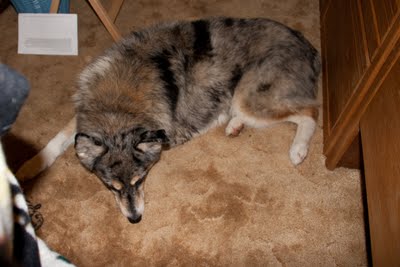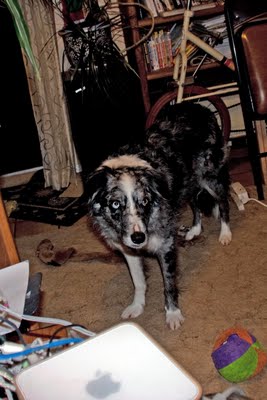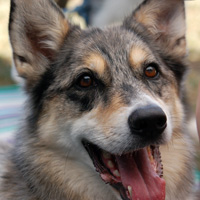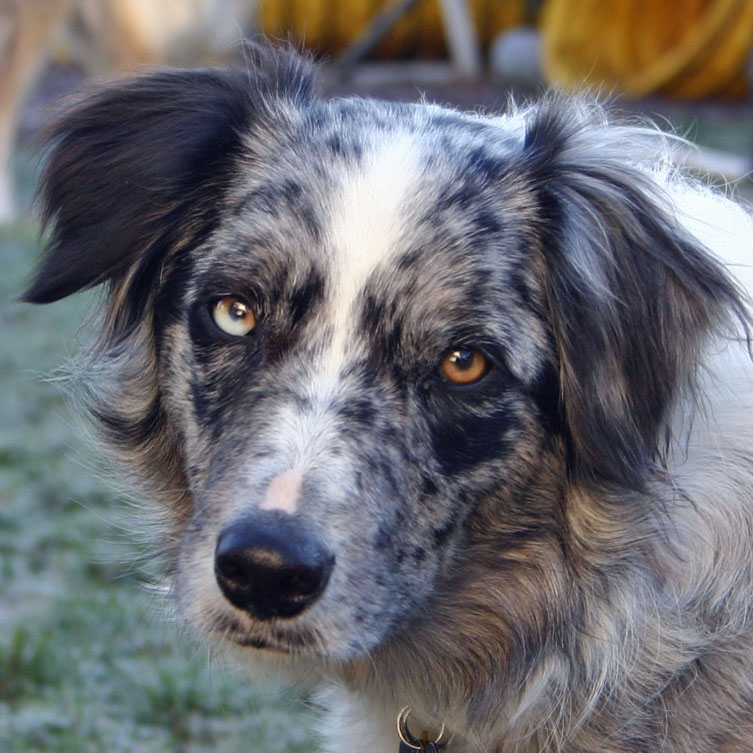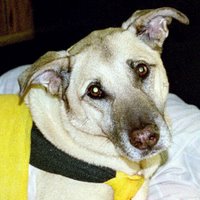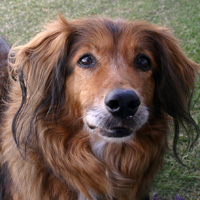SUMMARY: What I track and how.
A reader asks what I track from my agility competitions, and how I track it. I'm a bit obsessive about some things, but in looking over other people's shoulders with their agility record books, I think I track the same sorts of things that detail-minded people track everywhere.
Available trackers
First, let me tell you what's available to the public at large that are used locally.
You can get very nice record books from
DoggoneGood or from
Clean Run (and probably other places as well).
Some of my fellow Bay Teamers are also creative in their record-keeping, and have made available their nifty trackers:
- Member Karey Krauter's one-page crib sheet for tracking your progress towards USDAA, NADAC (older-style NADAC--could be used for ASCA), and AKC titles. (Print and mark up.)
- Get member Holly Newman's nifty Excel spreadsheet for USDAA titles—you fill in the dates you Qed, it calculates what titles you've earned!
- Get member Dave Connet's spiffy Windows program for managing your Qs and titles in most venues, free software! Because he's a nice guy! (Though he does ask that you make a donation to a local animal shelter or rescue group. And runs only on Windows, sorry.)
- My paper tracking sheet, which I fill out at the trial (and later take home and put into my database, but you don't have to), is available here in Word format or PDF.
What I Track
You can see from my tracking form that I gather quite a bit of info. I track
every run, whether I qualify or not, and whether it's even possible to qualify, because I am as interested in the things that we don't do well, not just titles. (Caveat: I don't do AKC, so any AKC-specific data isn't in my list.)
- Trial info: Venue, host club, location.
- Date of each run
- Level
- Class
- Jump height: This used to be just for my own info, but now USDAA in particular has rules about participating in the Championships at the heights you earned the Qs.
- Qualifying: Did I Q? Super-Q? Or not? Or is it a nonqualifying class? (e.g., DAM team Jumpers by itself isn't qualifying; runs at USDAA Nationals aren't qualifying.)
- Placement and number of dogs competing directly against us: This was originally for fun for me, but in USDAA you can use this to calculate your Top Ten points and to figure out the number of Snooker Super-Qs.
- Number of dogs running same course: Any height/any level; this isn't on my official tracking sheet, but sometimes I like to know that, although we competed against only 2 other dogs in our height and level, in fact 50 dogs of various heights and levels ran exactly the same course, so I can see where we fit more globally.
- Judge
- Faults or Elimination: I note just course faults, because my database calculates time faults using SCT and our time.
- Our time: This is most useful in Standard and Jumpers, but in Pairs Relay, your team's score is time plus faults, and Gamblers and Snooker it may help to determine your placement and also give you an idea of how much time you had left in which you might have done something different.
- Standard Course Time (SCT): In point-accumulation classes, this is the total time (e.g., opening plus closing in gamblers).
- Best time: I vary on this; sometimes I note the time of the 1st place dog competing directly against us; sometimes I note the fastest dog competing directly against us but maybe they knocked a bar or had a refusal. Sometimes I go to the back of my sheet and note the fastest times of all heights and levels on the same course to get that global idea.
- Yards: I wish I'd thought to track this from the very beginning, but I was more concerned then about whether we actually completed the course without faults and it never occurred to me to figure out whether our average yards per second (YPS) was improving, or where it fell in comparison to the rest of the world. (My database calculates YPS from Our time and Yards.)
- Points: For gamblers and snooker, I note our opening and closing points and the best opening and closing points (usually from the first-place dog, but sometimes in gamblers the dog with the best opening points doesn't get the gamble; I write what I want to write, as this doesn't actually have any effect on any titles.)
- Partner(s): Dog and human for pairs relay and DAM teams.
- Handler: Not on my official tracking sheet, but if someone else runs my dog (like when I was injured but still entered), I note that.
- Notes:
- I always note what our faults were (e.g., "2 bars", "Aframe down"). I try to be specific about the circumstances, because that's what'll help me figure out what to work on to improve. (e.g., "I called her on top of both jumps", "I did running front cross on Aframe and she didn't bother stopping".)
- I also note anything else that I think might help me--dog was faster or slower than usual (and maybe why); my physical problems; etc.
- I also note things that I think are interesting and help me to put our success (or failure) in context, like "10 of 15 dogs Eed", "only 1 of 53 masters dogs got the gamble".
- For snooker, I note our obstacle numbers--e.g., 1-4-1-0-1-7+2-5.
- For Gamblers, I might note the opening time allowed and the point system used; might also note how many obstacles we did and of what type (e.g., 2 weaves, 2 contacts, 5 tunnels, 4 jumps). Quite a few people figure out how much they can do in a certain amount of time by counting obstacles; mostly now, though, I use other methods for figuring that out.
- title earned: I figure this out manually.
My database calculates time faults, yards per second, USDAA Top Ten points.
Having the data in a database allows me to obsessively calculate things like what Q percentage did I earn at a trial. And to search in every possible way and get results back (e.g., "Tika, USDAA, Jumpers, Masters, sorted by date... or sorted by YPS", or "All of my runs that have ever earned any Top Ten points").
What I Use
I use my own database in FileMaker Pro. It's not ready for prime time--it's a mishmosh of experiments, old stuff that doesn't work any more and I didn't bother removing it, assumptions about what I need to enter to make it work correctly. I hesitate to offer to let anyone else have it because I have a feeling that it would fail miserably in anyone else's hands and be a frustrating experience. But I enjoy it.
Labels: obsessing, statistics, trial results
Complete list of labels

